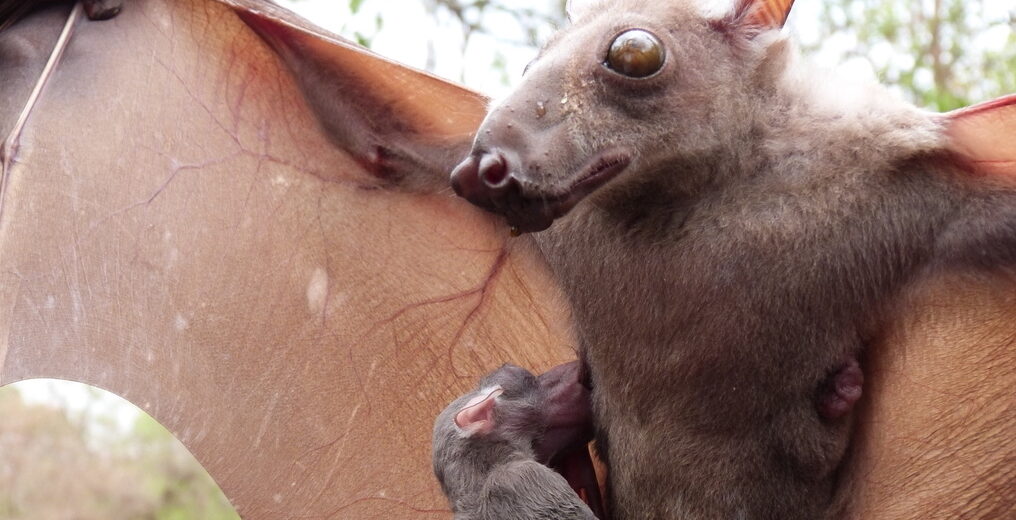
That’s right. You read it correctly. It’s not a hammerhead shark, it’s a hammerhead bat! This critter is what is called a megabat. They are widely distributed in equatorial Africa. This large bat is found in riverine forests, mangroves, swamps, and palm forests at elevations less than 5,900 feet. These bats are listed as Least Concern by the IUCN.
First the Stats…
Scientific name: Hypsignathus monstrosus
Weight: Up to 15.9 ounces
Length: Up to 11.2 inches
Wingspan: Up to 38.2 inches
Lifespan: Up to 30 years
Now on to the Facts!
1.) The male possesses an enormous head for producing loud honking calls.
2.) Hammerhead bats are frugivores. This means that they only eat fruit.
3.) Males may fly long distances, up to 6 miles, to locate the highest quality food!
4.) Most large bats tend to overheat when flying, so they tend to only fly during cooler times, like in the evening. So, you guessed it, these bats too are nocturnal. (active at night.)
5.) The main predators of the hammerhead bat are humans and nocturnal and diurnal birds of prey.
But wait, there’s more on the hammerhead bat!
6.) Not much is known about the reproduction in hammerhead bats. In some populations breeding is thought to take place semi-annually during the dry seasons.
7.) Females generally produce 1 offspring at a time.
Did you know…?
These bats are considered a minor pest as they have been known to kill chickens!
8.) Being mammals, the females provide milk, protection, grooming, and other essentials to their young.
9.) In some populations of hammerheaded bats, males gather along rivers at night and display by rapid wing flapping accompanied by loud vocalizations. An arena may contain from around 25 – 130 males. Females fly through the arena assessing the males. Once the female’s choice is made, the female lands on the branch and sits beside the male. Then the mating begins!
10.) The baby bats are called pups.
11.) It is suspected that the hammerhead bats may be a carrier for ebola.
Now a Short Hammerhead Bat Video!
Also, check out the Critter Science YouTube channel. Videos added frequently!
Want to suggest a critter for me to write about? Let me know here.
Learn more about all kinds of cool critters, right here!
Some source information gathered from Wikipedia.



